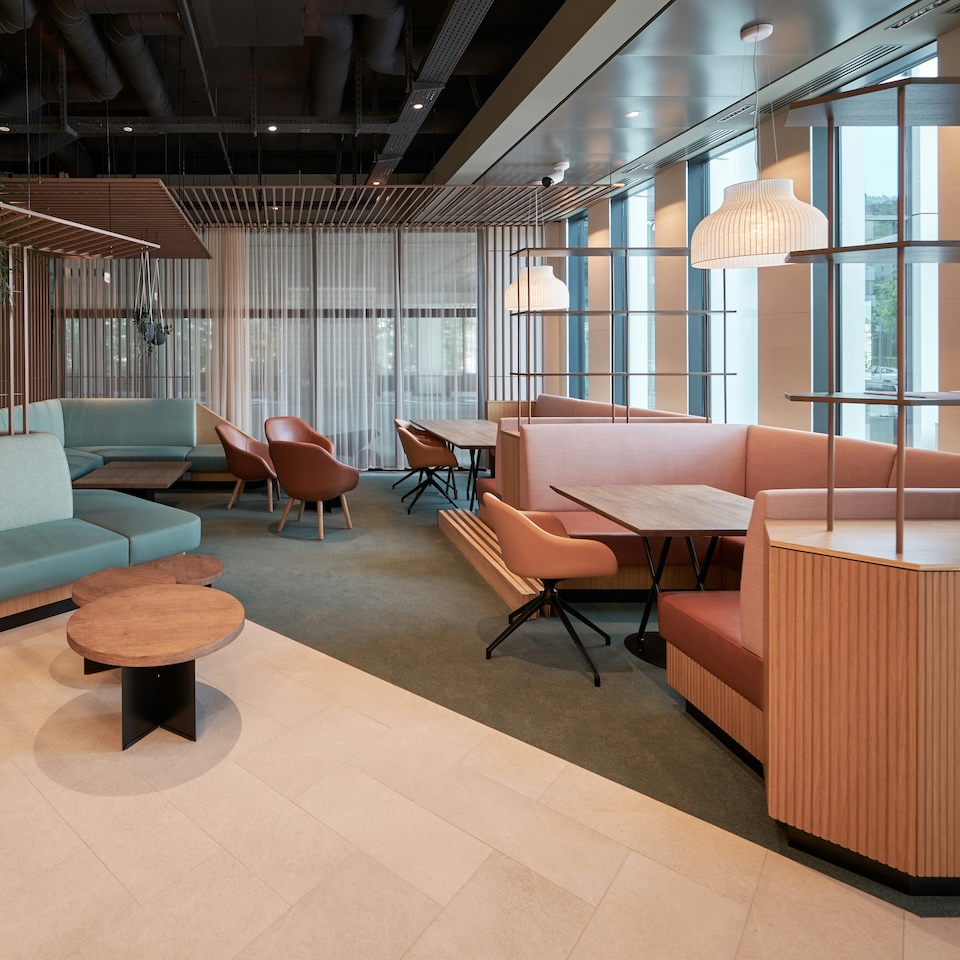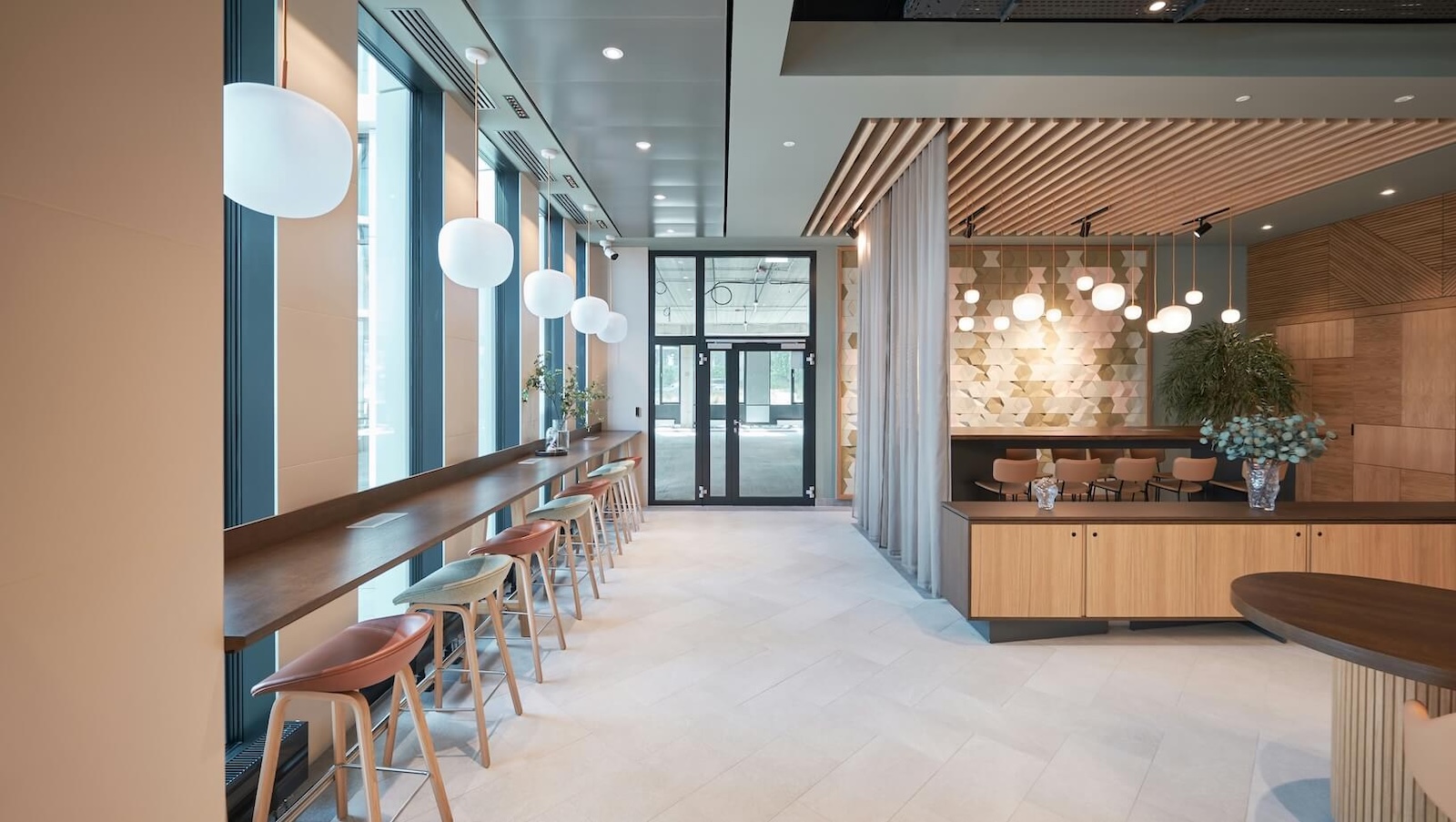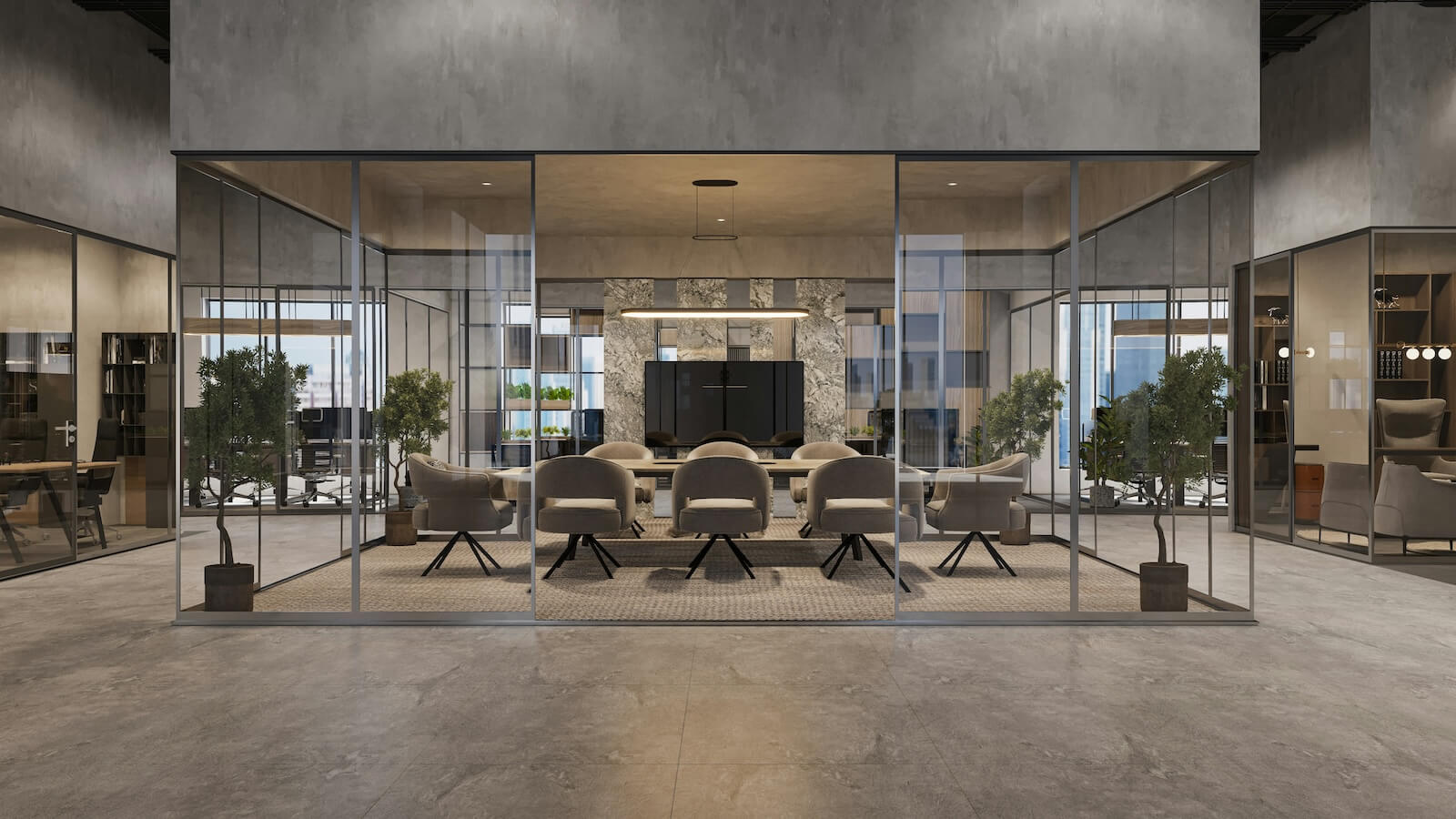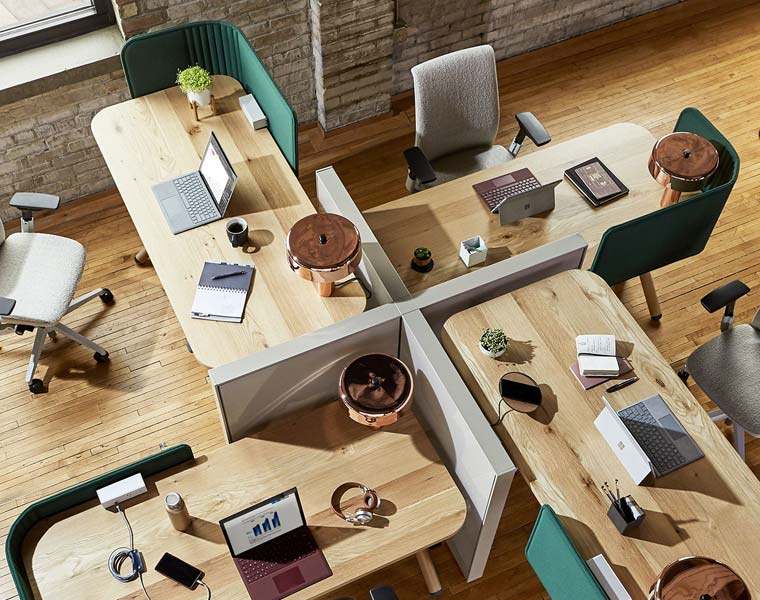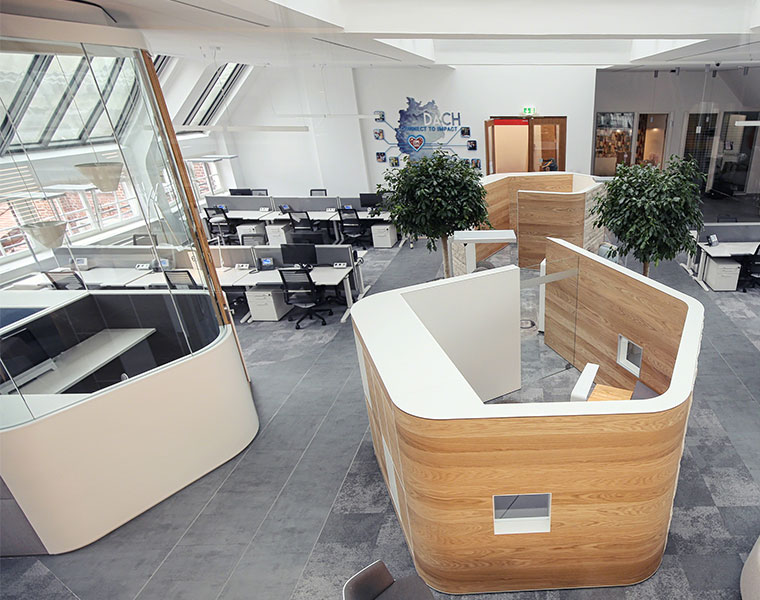Office relocation isn’t just about packing boxes and filling a moving van full of furniture. In today’s working landscape, moving your business premises can be one of the most complex projects you can undertake.
Whether you’re expanding, downsizing or just in need of a fresh start, your relocation decisions will impact things like business operations, employee satisfaction and even revenue for years to come. That’s why it’s so important to manage effectively.
Poorly planned relocations can cost around 20% more than you budgeted for, not including the dip in productivity and output if business is disrupted. But if you get it right, you’ll be able to foster a workspace that meets current needs while positioning your business for future growth.
In this blog post, we help you get to grips with how to prepare for an upcoming office relocation project, so you can set you, your business and its employees up for success.
Office relocations now take 25% longer
The modern office relocation landscape has changed a lot, which means how you prepare and how you manage it needs to adapt too.
Today’s businesses have the added complexity of considering things like hybrid working, advanced technology integration, employee wellbeing, and sustainability goals – all while maintaining business as usual. It’s no mean feat.
In fact, according to recent figures, office relocation projects now take 25% longer to complete than five years ago. This is primarily due to increased workplace complexities and considerations like the ones listed above.
However, stats also show that businesses that invest in proper planning and strategic office fit out during their move typically see 15-20% productivity improvements within the first year. So, the juice is worth the squeeze but strategic planning is critical to ensure a smooth, successful move.
Planning for an office relocation project
Successful office relocations begin with thorough strategic planning, ideally starting 12-18 months before your intended move date. Start by conducting a comprehensive audit of your current space and how people use it.
- How many people actually work in the office daily?
- Which areas are consistently busy versus underutilised?
- What are your unique workplace issues that need solutions?
- How can your physical space better reflect your business’s brand identity?
This kind of insight is crucial when choosing where your next office location will be and when it comes to designing your new workspace.
Take a close look at your business’s five-year growth plan and how it will be impacted by where your teams work and vice versa.
- Will you be expanding your team?
- Are you likely to adopt new technologies?
- Will you need different types of work settings?
These kinds of questions determine not just space size but also the type of environment you need.
Top tip: Involve your leadership team from the beginning. Research shows that relocations with full leadership buy-in are 40% more likely to stay on schedule and within budget.
Creating your office fit out strategy
Don’t treat office fit out as an afterthought or a separate part of the relocation project. The most successful relocations integrate workspace design, furniture and technology considerations from the very beginning, ensuring every aspect supports operational needs and cultural goals.
This is because odern office fit out goes way beyond putting old furniture in new building and giving the new space a lick of paint. It’s all about choosing and creating environments that support different work types, accommodate various working styles and provide flexibility for business growth.
Consider how your space will support both focused individual work and collaborative activities. Traditional permanent desk assignments are increasingly outdated. Instead, create different zones such as:
- Quiet areas for concentration
- Collaborative spaces for team projects
- Informal meeting areas for quick catch-ups
- Social spaces for rejuvenation and relationship building
Technology and connectivity
Technology integration is also a crucial part of an office fit out, so should be considered as part of your office relocation plan of action.
Your fit out should include comprehensive planning for power distribution, connectivity and AV resources. For example, every meeting room should be equipped for seamless video conferencing, with reliable WiFi coverage for uninterrupted collaboration and communication.
Modern office relocations are as much about digital infrastructure as physical space because your technology setup can make or break your new workspace success, particularly when supporting hybrid working patterns.
Your new space should provide reliable, high-speed internet connectivity throughout, with sufficient bandwidth for video conferencing, cloud applications and collaborative tools. Consider scope for things like high-quality cameras, microphone and displays that make remote participants feel truly included.
Also consider smart building technologies. Automated lighting, climate control and security systems improve both employee experience and operational efficiency. Room booking systems help optimise space usage, while occupancy sensors provide valuable data about actual space usage.
Read more: Why workplace technology is an essential part of office fit out >>
Logistics and project management: keeping everything on track
Office relocation logistics are complex projects, involving multiple suppliers, strict timelines, and an array of different coordination challenges. Successful projects require meticulous planning and robust project management.
Some businesses opt for phased approaches, moving different departments at different times. Others prefer complete shutdown and fresh starts.
Develop a comprehensive project timeline that covers all major milestones, from lease negotiations through to final setup and fit out. Build in buffer time for unexpected delays, around 20-30% additional time, to give yourself some wiggle room.
We would always recommend appointing a dedicated project manager or relocation coordinator as the main point of contact for all communications to streamline project management.
Inventory management
Inventory management is often overlooked but this is also a vital part of office relocation project preparation.
Create detailed lists of all furniture, equipment and supplies that will need to be relocated. Decide what should come to the new space, what can be disposed of, and what might need temporary storage.
Financial planning and budget management
Office relocation costs can quickly spiral without careful financial planning. Beyond obvious expenses like removal services and new furniture, numerous hidden costs can catch you off guard if you aren’t careful.
Create a comprehensive budget including all potential expenses, including:
- Lease costs
- Legal fees
- Removal services
- New furniture and equipment
- Technology and setup
- Office fit out costs
- Temporary storage
It’s also important to consider how you will cover potential business interruption costs. We recommend adding a contingency fund of at least 15-20% to your budget to help manage this.
Also, think about the timing of financial commitments carefully. For example, there may be a short period where you need to pay rent on both premises (old and new).
Top tip: To help keep costs down, you could consider offsetting costs through the disposal of unwanted items. Old furniture and equipment might have resale value, which can help you recoup some cash.
Dealing with the human side of change
Employee resistance is one of the primary causes of relocation delays and cost overruns, which is why transparent communication is crucial.
Start talking to your team about the relocation immediately, even if the details are unclear, to gather their thoughts and feelings. They are the ones using the space the most after all.
You could even consider conducting employee surveys to better understand their concerns and preferences. What aspects of the current office work well? What would they like improved? This information is invaluable for office fit out decisions and helps employees feel involved.
Explain the reasons for moving, the benefits it will bring and how it aligns with company goals. Regular updates throughout the process also help maintain trust and reduce anxiety.
Pay attention to practical implications. Will the new location significantly affect anyone’s commute? Some businesses offer temporary flexible working arrangements during transition periods, for example, or contribute to travel costs for employees facing longer commutes.
Read more: Why employees should be involved in the office design process >>
Post-move flexibility and space optimisation
The work doesn’t stop once you’ve moved. The first few months are crucial for identifying what’s working well and what needs adjustment.
Monitor space usage carefully during the initial weeks. Are different zones being used as intended? Are there consistently overcrowded or underutilised areas? Modern occupancy sensors and booking system data provide valuable insights.
Read more: AI mean and the future of office design >>
Gather employee feedback regularly. How are they finding the new space? What’s working well, and what could be improved? This feedback is invaluable for making minor adjustments that significantly impact satisfaction and productivity.
Be prepared to make changes. Even carefully planned office fit outs might need tweaks once people start using the space. The key is remaining flexible and responsive to real-world usage patterns.
TL;DR: Strategy sets the tone
An office relocation is one of the most impactful investments you can make in your business’s future. When approached strategically, with careful planning and proper office fit out integration, it can transform not just where your team works, but how they work. This, in turn, boosts other key factors like productivity, wellbeing and retention.
The key to success lies in starting early, involving the right people, and maintaining a clear vision. Your new office should be more than just a place to work – it should be a strategic asset supporting business goals, enhancing culture, and providing flexibility for future changes.
Your office should become a destination of choice and by following this guidance, you’ll be well set up to achieve exactly that.
Looking for support? Check out our recent projects or get in touch to learn more about how we can help.
